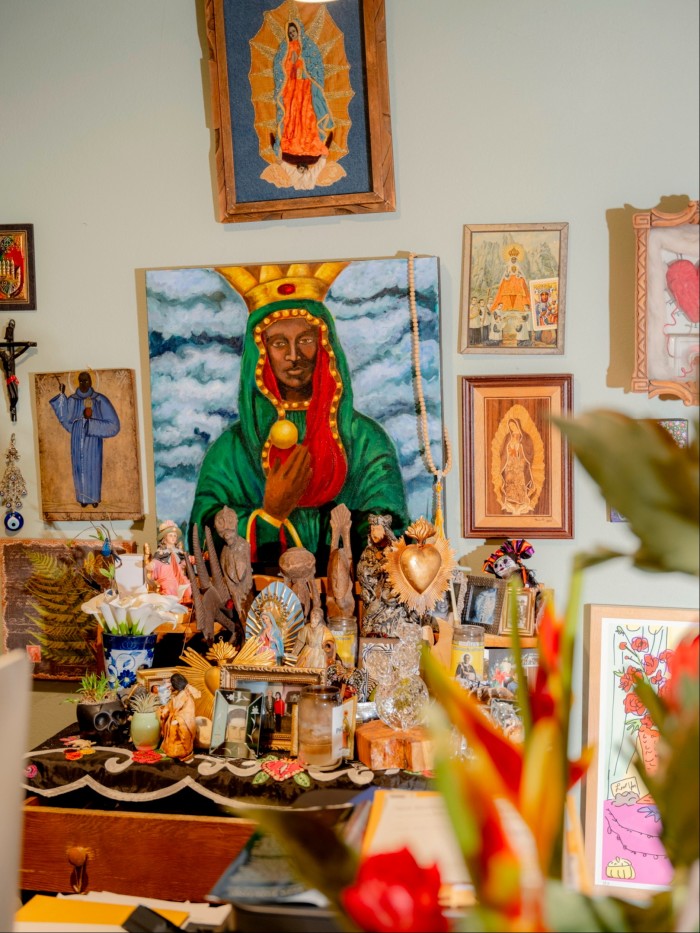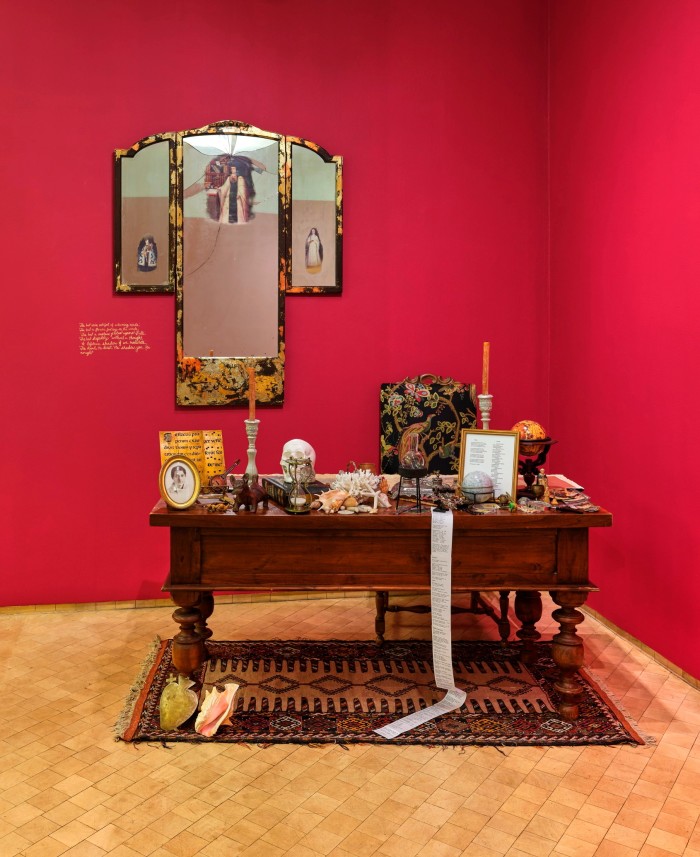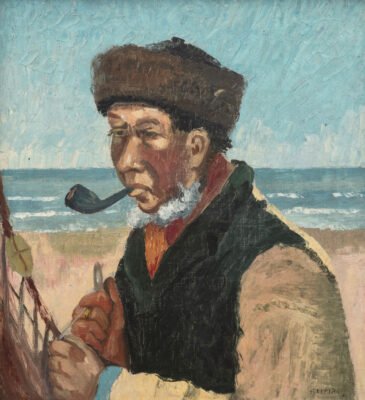Unlock the Editor’s Digest for free
Roula Khalaf, Editor of the FT, selects her favourite stories in this weekly newsletter.
Amalia Mesa-Bains, an unsung pioneer of the Chicano art movement, has just started trusting others to remake her installation work — luckily, in time for her retrospective, which opens at El Museo del Barrio in New York next week. “It was hard in the beginning because I’ve never had anyone do my own work, but it was time,” she says. “A show this size is quite a formidable undertaking. But I think we’re in safe hands.”
Her altar-like installations evoke the Mexican tradition of ofrendas — offerings for the dead which resemble a tiered sculpture, with photographs, statuettes, flowers and other ornaments. Mesa-Bains recalls having once worked in a trance-like state to create her installations, which try to encapsulate how Chicano culture amalgamates many strands of art and thought. While health conditions have made her unable to engage with the works with the same physicality and fervour as before, when she used to construct the installations herself, she will make “adjustments” and creative reimaginings to the installations ahead of her show’s opening.
Mesa-Bains, born in California in 1943 to parents who crossed the border fleeing the Mexican revolution, is a third-generation artist, descended from folk artists on her father’s side. Trained as a painter, she became absorbed in the Chicano art movement, in which Mexican-American artists sought to establish their own identity, as it emerged on the west coast in the 1970s. She then focused on three-dimensional works that honoured Día de los Muertos (Day of the Dead) rituals as a “form of cultural reclamation”, Mesa-Bains says, speaking from her home in San Juan Bautista on California’s central coast.

The New York stop of her travelling retrospective — which opened at the Berkeley Art Museum and Pacific Film Archive in February last year — will be like a homecoming for the artist. She had her breakthrough in the city in 1987 at the early Chicano art space Intar with the exhibition Grotto of the Virgins, a series of installations devoted to her grandmother, to Frida Kahlo and to the actress Dolores del Río. Another milestone came in 1993 with a solo exhibition at the Whitney Museum of American Art, titled Venus Envy Chapter One (or the First Holy Communion Moments Before the End). The artist’s work was also included in El Museo’s 25th anniversary exhibition in 1995. But few other big opportunities materialised over the next decades.
The installations in the retrospective date to 1992, which is around the time Mesa-Bains began “thinking about art as a more permanent process”, she says. Works from the previous two decades were sparsely — if at all — documented and would be virtually impossible to recreate. Most of the works incorporated some of the same objects, such as photographs, religious statues and perfume bottles, and featured aromatic elements including fresh flowers that engulfed the galleries. “I liked the idea of what I call the fugitive experience,” she says. “The intensity is greater when you’re in the presence of something that is leaving you at any moment. Anyone who didn’t see it can never fully understand it.”

This transient approach is partly due to Mesa-Bains never having an interest in selling her work. But now that she is 80, thinking about the preservation of her installations has become more urgent. “I lay awake at night thinking of my cositas — my little things — because these are the talismans of my life. But it’s best to have these things in the institutions now. There’s no guarantee that things will not get thrown in the dumpster after we die.”
Her first sale was to the Smithsonian American Art Museum in 1995 — then nearly 30 years into her career. It was a time when “Latinos were entering the institutions, then the doors shut again and again throughout the years,” Mesa-Bains says. Other institutional acquisitions came only decades later.
Trish Bransten of the San Francisco-based Rena Bransten Gallery has represented Mesa-Bains since 2019 and has helped place three of these acquisitions, knowing she had to “safeguard the installations from disappearing into cultural detritus”, she says. Although Mesa-Bains began producing prints in the 1990s, which range from $3,000 to $12,000, these works have not “trickled down to individual collectors, but more to curators who recognise Amalia’s importance”, Bransten adds. “Amalia’s market is the institutions.” Mesa-Bains herself describes the prints as studies for the larger installations, since there was “never a sense that the installations would be sold”, she says, although now they find buyers.
Throughout, Mesa-Bains has supported her art with other roles as a professor, an arts commissioner, a curator and an academic, and she received the MacArthur “Genius” grant in 1992. Curator Susanna Temkin — who organised the retrospective in collaboration with Maria Esther Fernández and Laura E Pérez — says, “For people interested in the field of Latinx art, Amalia has always been there.”

Mesa-Bains is one of several women artists of colour who are just now receiving recognition decades into their careers. Recognising her contributions to the Chicano art canon, she plans to bequeath her works and archive to select museums but is still working out the best stewards. Her hope is that the works will continue to advance the understanding of the “cultural complexities” of Chicano art, which was built from the “intermingling of family histories, heritage, sexuality and cultural experiences”, she says.
“Our generation broke ground without the dream or vision of any of this — we simply wanted a better life for ourselves and for our community,” Mesa-Bains adds. “I had to be almost 80 years old for this moment to happen, but now there are Latinos everywhere that I’m being collected, and there’s great enthusiasm from the younger generation. But I’m still weary. Will the momentum end? Will we be shut out again? But no, I don’t think so. There’s something different now.”
‘Amalia Mesa-Bains: Archaeology of Memory’ runs May 2-August 11, elmuseo.org





